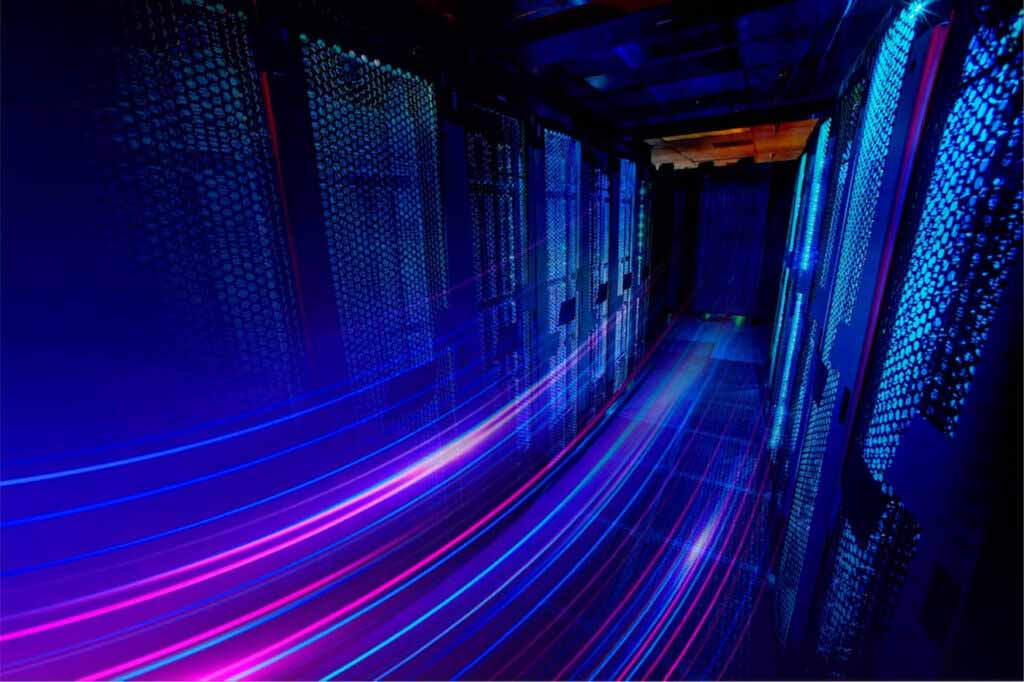What Is Optical Fiber?
An optical fiber is a flexible plastic or glass fiber capable of transmitting information with light pulses instead of electrical pulses. This delivers a bandwidth hundreds of times higher than traditional systems. Optical fiber is frequently used by various industries, commercial businesses, governments, and militaries for data, voice, and video transmission.
Common Types of Fiber Optic Cables
Fiber optic cables can be protected by sheathing and armor, making them immune to harsh environmental conditions and a good choice for your telecommunications needs.
Single Mode Fiber Optic Cable
Single-mode optical fiber is a glass fiber that has only one wavelength and pathway for light to travel. This decreases the number of light reflections and lowers attenuation. While single-mode fiber is a little more expensive than multimode fiber, single-mode fiber optic cable is still a better choice for making network connections over long lengths.
Multimode Fiber Optic Cable
Multimode optical fiber is a glass fiber that transmits light at several wavelengths and allows information to be transmitted in multiple pathways. It has two types: step-index multimode fiber and graded-index multimode fiber. Multimode fiber is typically used for shorter distances, such as connections between equipment, data, and audio/video applications in LANs.
Plastic Optical Fiber (POF)
Plastic optical fiber, or POF, is a large-core step-index optical fiber. The large size of the core makes it easy to couple light from multiple LED sources and doesn’t require high-precision connectors. For applications that don’t need high bandwidths over large distances, POF can be a good option for desktop LAN connections.
Advantages of Using Fiber Optic Cables over Copper Cables for Your Telecommunications Needs
If upgrading your existing telecommunications network or planning a new network cable installation, consider using fiber optic cables instead of copper cables. Fiber optic cables have significant advantages over copper cables.
Fiber Optic Cables Are Capable of Faster Speeds
Since fiber optic cables have a core that carries light to transmit data, fiber optic cables can carry signals at speeds just 31% slower than the speed of light, which is much faster than Cat5 or Cat6 copper cables. Fiber optic cables also experience less signal degradation.
Fiber Optic Cables Provide Greater Bandwidth Than Traditional Cables
Copper cables have a limited bandwidth since they were initially designed for voice transmission. Still, fiber optic cables have a much higher bandwidth and can carry more data than copper cables of the same diameter. If your network has experienced low bandwidth, struggles to meet your business data transfer needs, has issues accessing cloud applications, or has problems with multicast video breaking down, upgrading to fiber optic connectivity can give you the higher bandwidth you need.
Fiber Optic Cables Offer Better Reliability, Durability, and Resistance to Damage
A significant advantage of fiber optic cables is that they are more reliable, durable, and damage-resistant than traditional copper wires. Fiber isn’t affected by moisture, temperature changes, or severe weather conditions, which can impede the connectivity of copper cables. Electromagnetic interference (EMI), which can interrupt data transmission, does not affect fiber optic cables. Additionally, fiber optic cables will not present fire hazards like old or worn-out copper cables can.
Fiber Optic Cables Are Capable of Longer Transmission Distances
Fiber optic cables are a low power loss media, which allows higher bandwidths over greater transmission distances. While all fiber optic cables can carry signals significantly more than copper cables, some single-mode fiber optic cables can carry signals for almost 25 miles.
Fiber Optic Cables Are Easier to Install and Maintain Than Copper Cables
Fiber optic cables don’t require specialized skills or equipment to be properly installed, making them much easier to install and maintain than traditional wire cables. With fiber optic cables, your network is much less likely to experience issues like interference or signal loss, and you’ll be able to maintain high data transfer speeds without worrying about frequent maintenance or potential issues.
Fiber Optic Cables Have a Lower Total Cost of Ownership
Fiber optic cable’s reliability, durability, and ease of maintenance lower its total cost of ownership compared to copper cable. Additionally, as technology advances, the costs for fiber optic cables and related components continue to decrease.
Fiber Optic Cables Provide Stronger Security for Your Network
Fiber optic cable helps keep your data secure since it doesn’t radiate signals, and the construction of the cabling makes it extremely difficult to intercept transmission signals. Physical security is higher with fiber optic cables since all the hardware and electronics can be installed in a single centralized location, unlike traditional copper cable networks, which require equipment to be installed in multiple locations.
Fiber Optic Cables Offer More Flexibility for the Future
Fiber optic cables can be integrated into existing networks with media converters. Current fiber network solutions allow you to integrate equipment with a variety of high speeds to not only meet your current network needs but also provide flexibility for your future network needs.
Contact DataField
If you’re considering a new fiber optic network or upgrading your current network with fiber optic cables, Contact DataField today to learn more about our fiber optic cable solutions.

